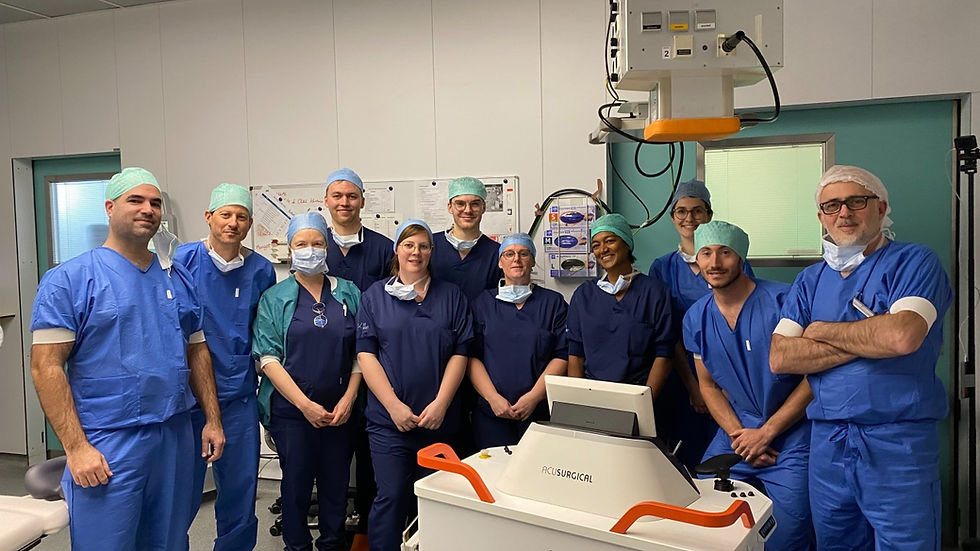V- LUCA®: From First Surgery to a New Era in Retinal Precision
- Amélie Saraby
- Jul 1, 2025
- 2 min read
Just over a year ago, LUCA® entered the operating room for the very first time. In February 2024, at UZ Ghent in Gent, Belgium, a historic milestone was reached: seven successful vitrectomy surgeries were performed using the world's first bi-manual robot for the retina — with zero device-related adverse events. (More on that in our previous article.)"
But for the AcuSurgical team, this wasn’t the finish line. It was the starting point.
The First-in-Human (FIH) study triggered a continuous cycle of testing, refining, and validation. Today, LUCA® is more precise, better controlled and more intuitive, and already demonstrates superiority in doing complex tasks over traditional manual surgery.
A Strong Clinical Foundation
The FIH study conducted at UZ Ghent demonstrated:
the robot’s safety in real-world conditions: no device-related events and excellent stability throughout the procedures,
its compatibility with standard surgical workflows: smooth integration into the OR without disrupting other staff,
the quality of its motion under an operating microscope: ultra-stable, fluid, and responsive actions.
“We observed outstanding precision and stability, with impressive gestural comfort.” — Dr. Fanny Nerinckx, Vitreoretinal Surgeon, UZ Ghent
A Leap Forward
Since the FIH, LUCA® has continued to evolve. Dr. Nerinckx returned to the wetlab to push its limits further — this time testing the system on advanced tasks: membrane peeling and subretinal injections.
These are among the most demanding procedures in retinal surgery. Membrane peeling, for instance, involves gripping and lifting transparent, micron-thin structures without damaging the fragile retina beneath. Precision, stability, and control are paramount.
These tests confirmed it: LUCA® can now support such procedures with a level of fidelity and ease that surpasses manual techniques in some scenarios.
“Today, we crossed a threshold. Version 1.1 is ready. And the teams are already working on V1.2 which will offer the use of additional instruments and new digital features.” — Christoph Spuhler, CTO Acusurgical
Scaling Up
The FIH wasn’t just a technical milestone — it’s now shaping AcuSurgical’s entire strategy.
First, multicenter clinical studies are planned across several expert sites. The goal: confirm LUCA®’s safety and efficacy at scale, in diverse real-life conditions, and prove the consistency of outcomes.
Next, comes the regulatory race: CE certification is on the horizon, closely followed by the U.S. FDA. These approvals will unlock access to European and American hospitals.
Finally, new surgical indications are in sight. While LUCA® was designed for vitreoretinal surgery, its micrometric precision could extend to other ophthalmic — or even non-ophthalmic — interventions.
“This is only the beginning. In ten years, surgeons will look back and realize how limited they were. We’re entering the micron era.” — Ronen Castro, CEO AcuSurgical
A New Standard in the Making
The FIH success proved one thing:Robotic precision can enhance — not replace — the human hand.
It can steady it. Extend it. Free it.
Today, every test, every upgrade, every feedback session brings LUCA® closer to its true purpose:
To become the essential partner in the future of retinal surgery.
Follow AcuSurgical to see what’s next — and be part of what’s possible.


